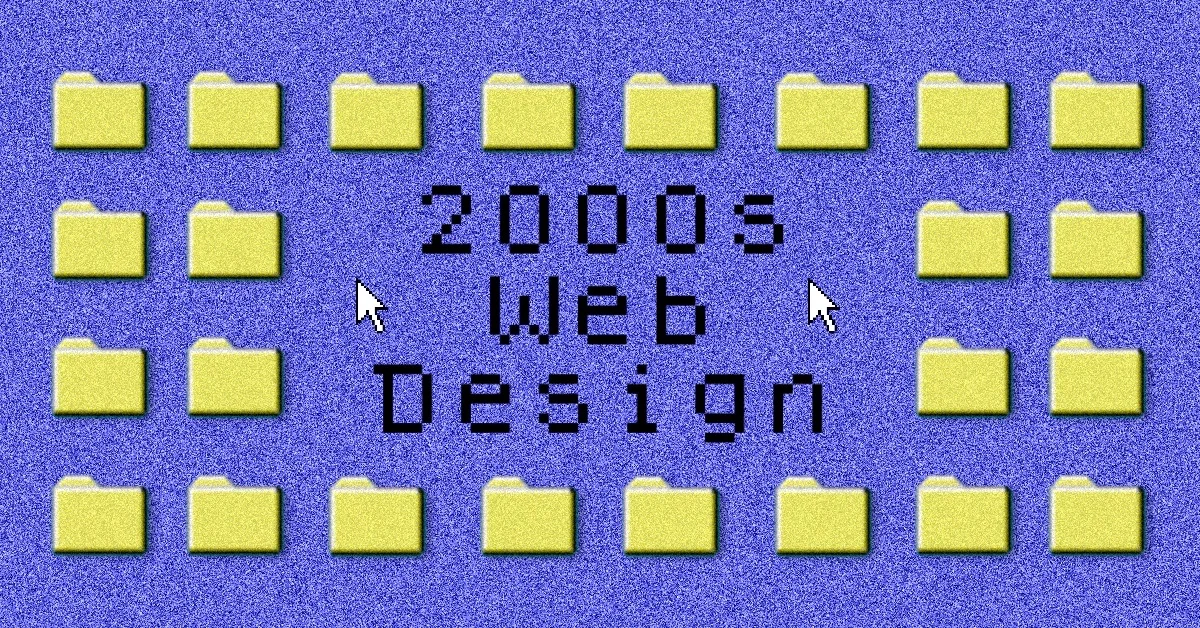Web Design in the early 2000s marked a significant era in the evolution of the internet, and with it, our internet browsing experience underwent a profound transformation. As we take a nostalgic journey through the digital archives, we’ll explore the distinctive trends, quirky elements, and iconic examples that defined web design during this period.
The Technological Landscape
Dial-Up Days:
The ubiquitous sound of dial-up connections set the soundtrack for the early 2000s internet experience. Websites had to be optimised for slower loading times. This limitation greatly influenced the design choices of the era.
Resolution Constraints:
Monitors with lower resolutions were the norm. Designers faced the challenge of creating visually appealing websites within the constraints of 800×600 pixels. This was a far cry from today’s HD screens.
Internet Explorer Dominance:
Internet Explorer was the dominant browser, leading designers to cater their creations to its specifications, often causing compatibility issues with other browsers. Later on, Mozilla Firefox, Chrome and Opera browsers brought in more competition in the market.
Iconic Design Trends
Flash Animations:
Flash animations were everywhere. Homepages featured animated intros and interactive elements powered by Macromedia Flash. While they added flair, they also tested the patience of users on slower connections.
Splash Pages:
Many websites embraced splash pages, often adorned with “Enter” buttons. Splash pages were the precursor to loading pages of today. These introductory pages aimed to create a cinematic experience but were more of an impediment to users seeking swift access.
Colourful Chaos:
Bright and contrasting colours defined the era. Vibrant colour schemes, often clashing, were not only accepted but celebrated. Neon greens, electric blues, and hot pinks adorned backgrounds and text alike.
Pixelated GIFs:
Pixelated GIFs were the go-to for adding visual interest. These tiny, animated graphics adorned websites, ranging from under-construction signs to dancing babies and sparkling stars.
Iconic Examples

Space Jam (1996):
Although predating the early 2000s, the Space Jam website is a nostalgic gem. Featuring an animated starry background, pixelated icons, and bold fonts, it captures the essence of early web design.
The Hampster Dance (1998):
While more of an internet meme, the Hampster Dance website perfectly encapsulates the whimsical nature of early web design. With a space background, repetitive animations, and catchy music, it became an internet sensation.
Homestar Runner (2000):
Homestar Runner, an early web cartoon series, had a website with a quintessentially early 2000s aesthetic. Flash animations, pixel art, and vibrant colours were staples of its design.
Design Elements and Quirks
Under Construction GIFs:
The ubiquitous “Under Construction” 8-bit GIFs greeted visitors on many websites. These GIFs featured animated construction workers or caution signs. They signalled ongoing updates or the site being a work in progress.
Visitor Counters:
Websites proudly displayed visitor counters at the bottom, showcasing the number of individuals who had visited the site. These counters were not just metrics; they were badges of honour. Today, a top rank on a Google search query is an honour.
Animated Cursors:
Designers embraced custom cursors, often animated or themed to match the website’s content. Cursors transformed into trailing stars, flaming arrows, or playful icons and even ‘My Little Pony’ added an interactive cursor.
Myspace Customisation:
Myspace, a social media giant of the era, allowed users to customise their profiles extensively. Themes, background music, and vibrant GIFs turned Myspace into a canvas for personal expression.
Evolution of Web Standards
Web 2.0 Emergence:
Towards the mid-2000s, the concept of Web 2.0 gained prominence. This marked a shift towards more user-friendly interfaces, cleaner designs, and the advent of interactive platforms.
Introduction of CSS:
Cascading Style Sheets (CSS) gained wider adoption, allowing for better control over layout and design. This transition contributed to the move away from table-based designs toward more structured layouts.
Usability Becomes Key:
As the internet matured, the focus shifted from flashy designs to usability. User experience (UX) became a driving force, emphasising intuitive navigation and accessibility.
The Legacy of Early 2000s Web Design
While the early 2000s web design may evoke a sense of nostalgia and amusement, it laid the foundation for the internet landscape we navigate today. We may use a website from 2003 and criticise it today. However, the fact is that if we didn’t have that dodgy old website then, we wouldn’t have this smooth, browsing experience today. We are, you could say, riding on the backs of giants. The bold experimentation, though often unconventional, fostered creativity and paved the way for the more refined and user-centric designs of the present. Web design, app design UX and UI were founded on the experimentation of the web design of the early 2000s.
As we reminisce about glittering GIFs, pixelated graphics, and the distinctive charm of dial-up connections, let’s appreciate the role these design trends played in shaping the internet into the dynamic and visually engaging space we know today. Web design of the early 2000s was a playground of experimentation, and the lessons learned during this era continue to influence and inspire modern web design.







0 Comments